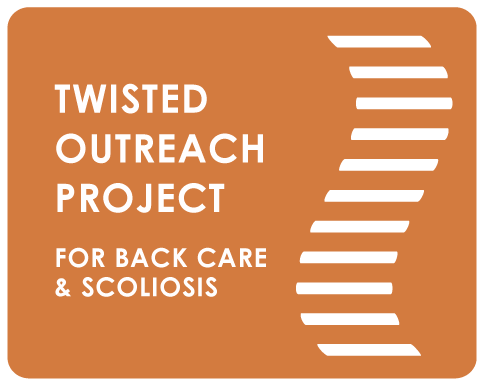CHOOSING CARE
Which therapeutic approach is best for scoliosis? It’s a common question, but a difficult one to answer. Everyone’s scoliosis affects them differently, and there are many variables to consider. Some people need to become more active, some to slow down, some to target a specific area and others to work the entire body. Each requires a different approach. In addition, the pain and discomfort caused by scoliosis can change over time due to age or circumstance, and this may require you to switch to another technique or treatment.
It’s good to do a few different things that complement each other, such as combining proactive exercise with relaxing massage and nutritional therapy. Remember, each therapeutic technique has variations and every practitioner has their own method. If one person’s approach doesn’t feel right, it is usually worth trying a different teacher before giving up on the technique. No matter what technique you choose, it’s important to communicate your issues clearly to the practitioner before you begin. Ask questions, and work with scoliosis specialists wherever possible.
Finding Scoliosis Specialists
The easiest place to start your search is with your doctor: Ask if they can recommend a specialist to you. If not, an online search may reveal clinics that offer specialized care. You can also search online yoga studios, massage therapists and other supportive care services in your area (note: ScoliSmart and Schroth clinics are mostly found in the U.S. and Europe).
If there are no scoliosis specialists in your area, you might consider traveling to meet with a specialist or take a workshop which will help you to develop a home practice. TOPS teachers and associates offer specialized expertise in many supportive care therapies through TOPS workshops and through their own private practices. Though most of our instructors are currently based in Vancouver, B.C., we are constantly adding to our list to provide contacts throughout North America.
Accessing Treatment
One of the barriers to exploring alternative therapies is cost. Some insurance plans subsidize these therapies, but not all. Group classes and workshops are more affordable than private sessions; however, it is highly recommended to have at least one private consultation with a trained specialist who can help you understand your particular curve pattern.
Knowing your own pattern enables you to visualize your own back — which way and how much it curves and twists, and which vertebrae are involved. This knowledge is essential to better communicate your needs to teachers and practitioners. It also increases your own awareness of which poses and activities work for you, which need to be modified to meet your needs, and how those modifications can be achieved. This knowledge is extremely empowering and helps promote the development of healthy movement patterns.

